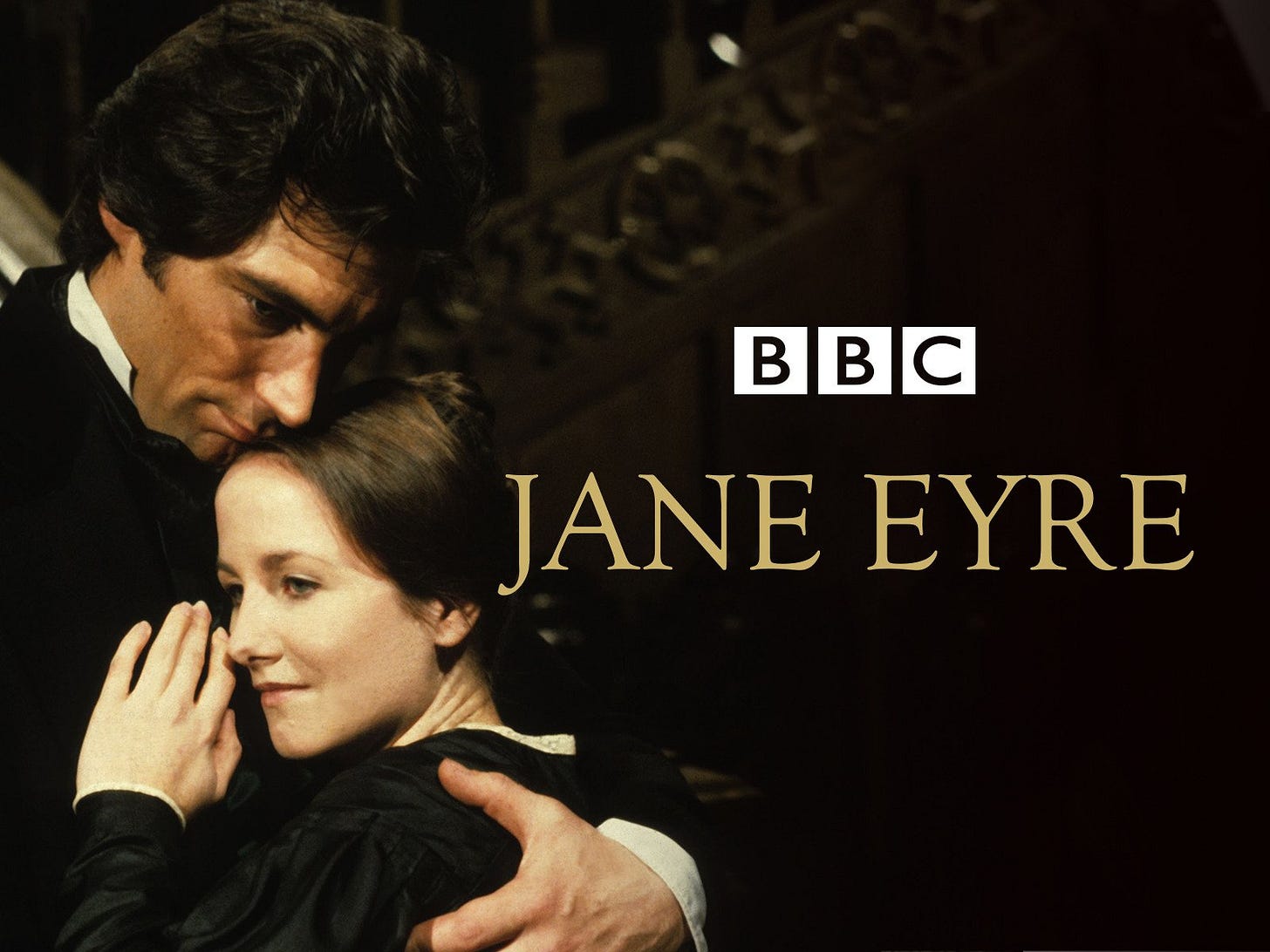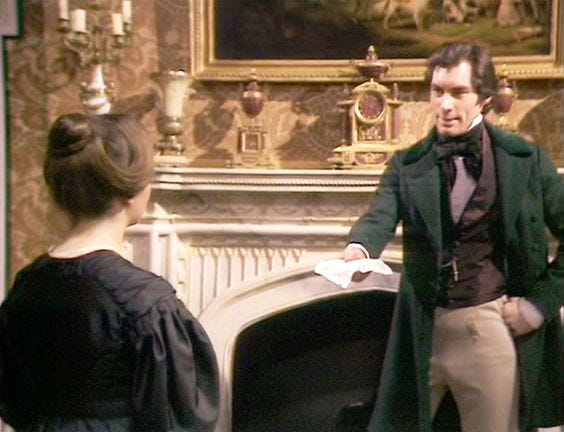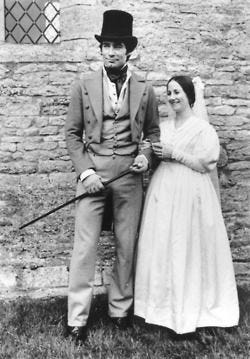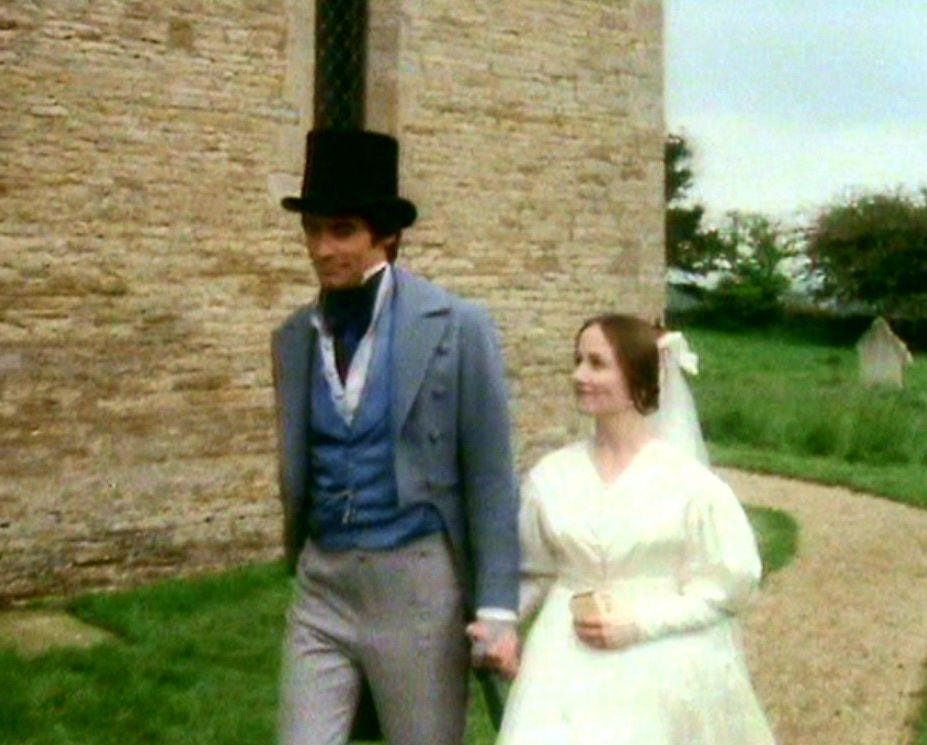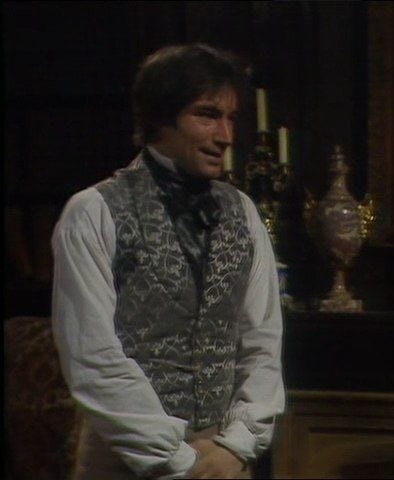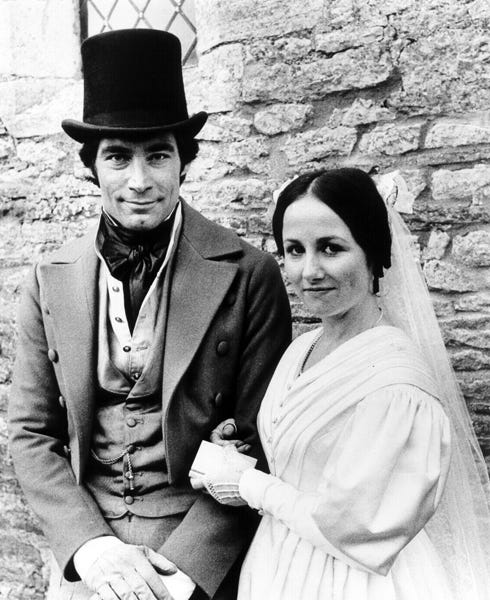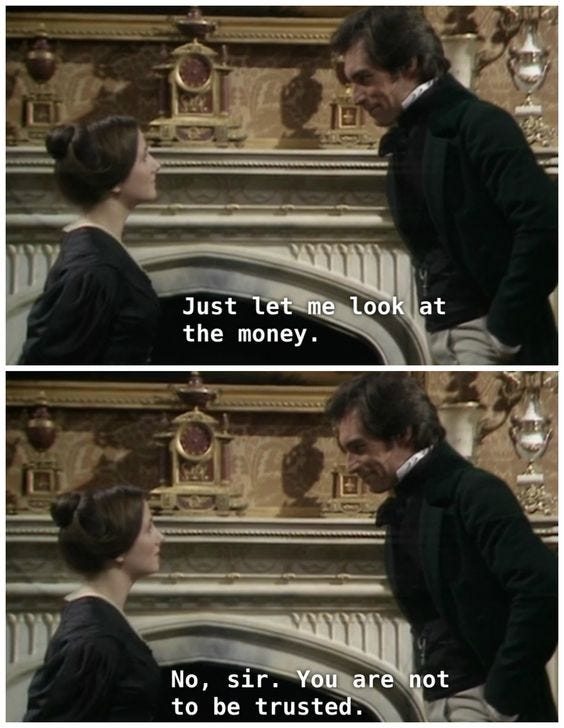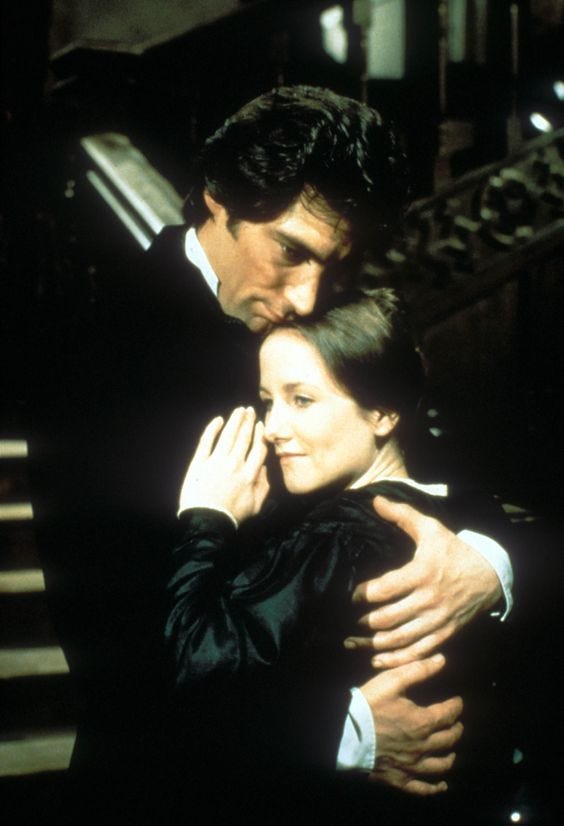Weddings in Jane Eyre: Part 1
The First Wedding of Jane Eyre and Mr. Rochester, or the no-wedding, adapted to the screen.
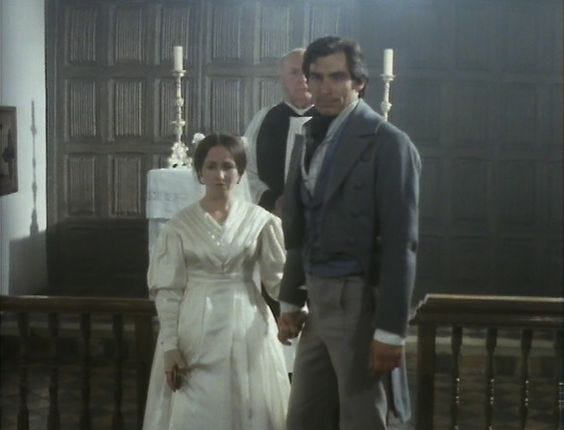
I decided to close this series with one of the most famous wedding scenes in fiction. If you know me, you know I love the Brontës. And you know I have many copies of Jane Eyre after falling in love with the book some time ago. I’ve read Wuthering Heights every year since I was 13 and I sometimes analyse books and movies for my own entertainment.
First of all, let’s bring some context into the most recent adaptations (and my favourite ones):
I love every adaptation of the novel for different reasons, every one of them focusing on different views on the story. In 1983 the BBC captured really faithfully the novel, with only one or two small changes from the book, and brings perfectly to the screen the teasing nature of their relationship, how they’re always talking and mocking one another. The 2006 version feels more like a fanfic, it’s really exciting because we get to see how close they get and how they talk to each other all the time, also capturing the sauciness of the original history, that was considered naughty when it first came out. I see the 2011 version as a more aesthetically pleasing version, very quick paced, and I love the montage of the engagement month, it’s really lovely and you really get to see that Jane and Rochester are happy together (when they look so serious most of the time in this movie). Zelah Clarke and Timothy Dalton; Ruth Wilson and Toby Stephens; Mia Wasikowksa and Michael Fassbender all brought the novel to light in really beautiful ways, and made us fall in love with this beautiful love story again and again. My favourite Mr. Rochester is Timothy Dalton, he really could capture Rochester’s moods perfectly and you can’t not fall in love with him. He´’s perfect and this is my favoruite version. Toby Stephens was very sexy and brooding, while Michael Fassbender’s looked at his Jane with so much love and awe, I loved the quiet acting he went with. When it comes to Jane, I can’t choose one, they’re all amazing for different reasons.
Now, to the weddings in each adaptation!
(Full disclosure, I haven’t watched any of the adaptations that aren’t mentioned here, and that’s why I won’t be talking about them).
The wedding of Jane Eyre and Mr. Rochester is a pivotal moment in Charlotte Brontë's Jane Eyre. It’s the most important scene in the book, one might say. Over the years, this scene has been adapted into numerous films, television series, and stage productions. Each adaptation offers a unique interpretation of this significant event, reflecting the director's vision, the era of production, and the actors' portrayals.
1. 1943 Film Adaptation (Directed by Robert Stevenson)
This movie has Joan Fontaine as Jane and Orson Welles as Mr. Rochester, Peggy Ann Garner as the young Jane, Margaret O’Brien as Mr. Rochester’s young ward Adele, Agnes Moorehead as Jane’s aunt Reed, and an eleven year-old Elizabeth Taylor as Helen Burns, Jane’s only friend at school.
This black-and-white film offers a gothic and dramatic interpretation of the wedding. The ceremony is conducted in a dimly lit church, enhancing the ominous atmosphere. The set design emphasizes the gothic elements, with heavy shadows and austere church decor. This, and the 2011 version, are the most gothic versions of Jane Eyre.
The scene is tense and foreboding, reflecting the underlying secrets that threaten the union. Orson Welles' commanding presence as Rochester dominates the scene, adding to the sense of unease.
Jan'e’s dress is a little over the top, and all the costumes and hairstyles are very 1940s, with only hints of 1840s fashion. Costume design was by René Hubert.
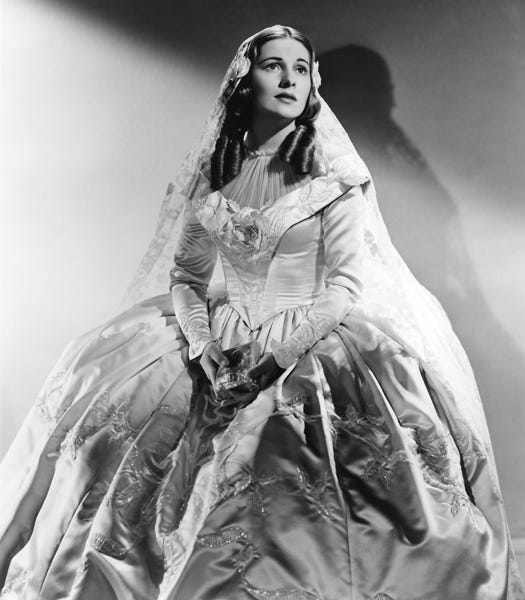
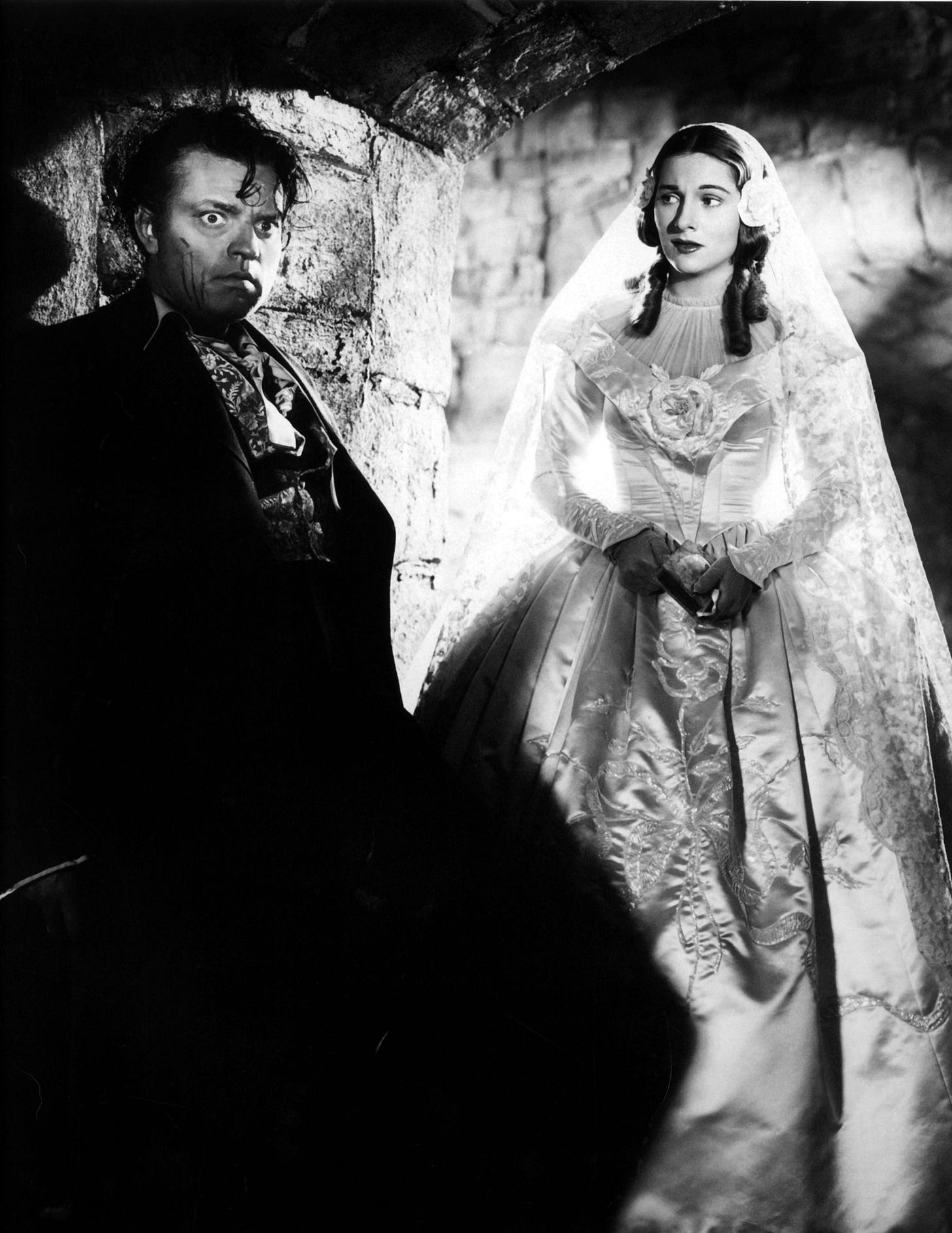
Sidenote: the novel was published in 1847, but many passages show that the story mostly takes place in the 1810s-1820s, and most adaptations sets the story in the 1840s. I guess because it is such a classic victorian text that it’s hard to imagine Jane in Regency fashions.
2. 1983 Television Series (BBC, Directed by Julian Amyes)
This is my favourite adaptation, as I’ve mentioned. The only complaint I have are the two discrepancies from the book and the hairstyles that make Zelah look a little older, when Jane should be 18. I love how she wears very little makeup and In truth I think only Mia Wasicowska looked as young as Jane should be, because they had her in more period accurate hairstyles for young girls and less austere clothing. But we’ll talk about that later.
This adaptation, featuring Zelah Clarke as Jane and Timothy Dalton as Mr. Rochester, remains faithful to the novel's details. The wedding is interrupted by Mr. Mason in a dramatic yet subdued manner. The scene balances tension and emotional intensity. Dalton's Rochester is passionate and brooding, while Clarke's Jane is determined and composed. The costumes are carefully crafted to reflect the period, with Jane in a simple but elegant wedding dress. This adaptation is set in the 1830s, following the traditional timeline (since her autobiography was published in 1847 and she had been married ten years, she would’ve gotten married in 7 June 1837, setting the original wedding day on 23/24 July 1836).
The church setting is realistic and detailed, enhancing the authenticity of the scene, a simple anglican church.
Jane’s dress is in the same style that she has worn throughout the whole series, only made of silk. The costume design was by Jenny Beavan.

She obviously mostly wears “stuff dresses”, made of cotton, in black or grey, as Charlotte Brontë tells us in the novel that Jane had only a few dresses, and only wears colour (a lilac gingham summer dress, after her engagement to Rochester; and a pale blue dress after their marriage):
“I repaired to my room, and, with Mrs. Fairfax's aid, replaced my black stuff dress by one of black silk; the best and the only additional one I had, except one of light grey, which, in my Lowood notions of the toilette, I thought too fine to be worn, except on first-rate occasions.“
I love how she’s wearing mittens, a very 1830s detail that isn’t always observed in other adaptations. Dalton’s Rochester wears a very beautiul suit, of light grey coloured trousers and blue waistcoat and accents, which was really in vogue from the 1840s onwards, a top hat and a cane. No gentleman would leave home without a top hat and a cane. And also, he’s wearing at least two waistcoats, in different colours, which was also very fashionable since the Regency.
Her veil looks really antique, and even though she should be wearing a bonnet, the whole outfit works and go really well with the time period. Some innacuracies are important when it comes to adaptations, so that the viewer can identify themselves with the characters.
You can watch the almost wedding here.
And nobody asked but I’m going to tell anyways, my favourite scene on this adaptation is this one, you can see they were having so much fun filming it and it’s one of the funniest bits in the book.
Last note: Either Dalton is incredibly tall or Clarke really small, but when he has his hand on her shoulder he looks like a giant.
He was also the only actor to actually do the scene with the fortune-teller and the only one to actually look scarred and maimed by the end of the series.
This concludes part one, it’s already too long. Next week we’re going to be looking at fan-favourite versions, the 2006 series and the 2011 movie.





